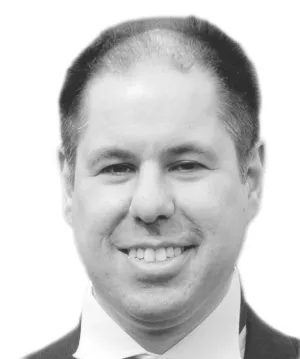Roswell UFO crash: What is the truth behind the 'flying saucer' incident?
Did an unidentified flying object really crash land at a New Mexico ranch in 1947, only to be hushed up by the government?
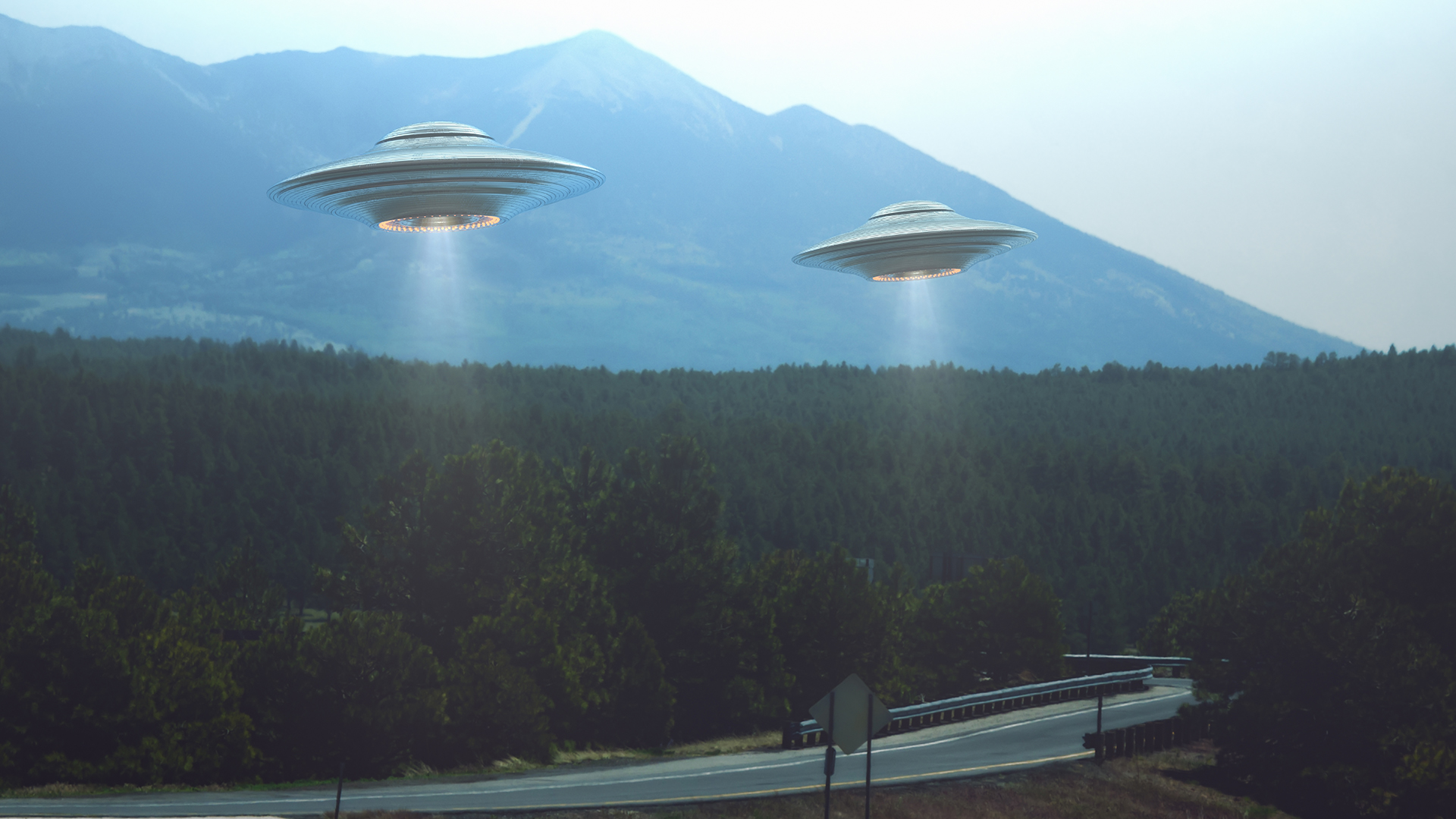
There is a spaceship that looks like a flying saucer in Roswell. Thousands of motorists drive past it every day, and hundreds of people go inside. It's on North Main Street in this southeastern New Mexico city, its metal skin gleaming as it basks in the glow of the sun. Its neon lighting burns into the retinas of those who view it throughout the evening, and it's rather hard not to admire. After all, aside from its striking looks, who doesn't crave a burger every now and then? That's right: This spacecraft is one of the city’s McDonald’s restaurants.
So why is the building shaped that way? It's not that far from the site of a mysterious incident that took place in 1947 — the day when a rancher discovered debris scattered around his sheep pasture, prompting speculation that an unidentified flying object, or UFO, had crashed there.
In June, or possibly early July 1947, William Brazel woke up for a normal day's work on the J.B. Foster ranch in Lincoln County, New Mexico, 75 miles (120 kilometers) north of Roswell, when he made a shocking discovery. He found on the ranch "a large area of bright wreckage made up of rubber strips, tinfoil, a rather tough paper and sticks," Brazel said in an article published on July 8, 1947, in the Roswell Daily Record.
Related: Blue UFO soars over Hawaii before crashing into the sea
Brazel hadn't heard of flying saucers — at least not yet. Sightings, however, were coming in thick and fast around that time. On June 24, pilot Kenneth Arnold claimed to have seen nine unidentified objects "flying like a saucer would across water" near Mount Rainier, Washington. Arnold estimated that the objects were flying at around 1,200 mph (1,930 km/h), Arnold was reported as saying in the East Oregonian; but at the time, there were no known craft that could reach those speeds. The Air Force also said it had no new experimental planes or guided missiles that would fit such a description, according to a U.S. Department of Defense report. That story became front-page news, and the term "flying saucer was born, despite Arnold describing the flying objects as crescent-shape," according to New Scientist.
The country soon became gripped, as Brazel discovered, by the sightings. By July 7, policemen and astronomers were reportedly being harassed for further reports, this time by people from New York and other eastern U.S. states; that was also the day Brazel decided to take action. He hand-delivered a box of accumulated debris, which he'd gathered with the help of his wife and two children, to Sheriff George Wilcox of Roswell, according to Smithsonian Magazine.
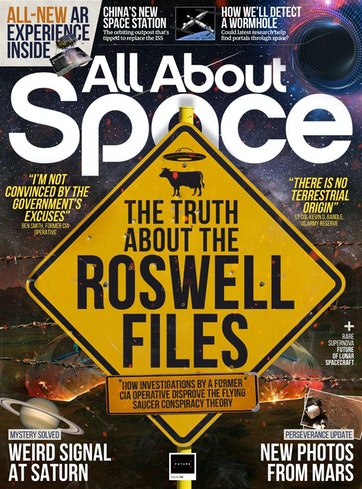
This article is brought to you by All About Space.
All About Space magazine takes you on an awe-inspiring journey through our solar system and beyond, from the amazing technology and spacecraft that enables humanity to venture into orbit, to the complexities of space science.
By now there was talk of a reward for anyone who recovered one of these unidentified flying objects. In the Roswell Daily Chronicle, Brazel is said to have "whispered kinda confidential-like" that his find may be one of the flying disks, so an equally intrigued Wilcox contacted Colonel William Blanchard, the commanding officer of the Roswell Army Air Field (RAAF), who sent agents to the site to gather the remaining material.
What happened next would cement the idea that the debris represented the remnants of an alien spacecraft. According to David Clarke's book "The UFO Files: The Inside Story of Real-Life Sightings," published by Bloomsbury in 2012, the RAAF's public information officer Walter Haut issued a press release on July 8: "The many rumors regarding the flying disc became a reality yesterday when the intelligence office of the 509th Bomb Group of the Eighth Air Force, Roswell Army Air Field, was fortunate enough to gain possession of a disk through the cooperation of one of the local ranchers and the sheriff’s office of Chaves County."
This was reported in the Roswell Daily Record along with the news that Major Jesse A. Marcel was the group intelligence officer dispatched to the scene. He had gone with Counter Intelligence Corps officer Sheridan Cavitt, but on his way back took a detour to his own home. There, he whipped out a couple of boxes of debris that he popped into the trunk of his car and showed to his 10-year-old son, Jesse Jr. One of the objects was said to have hieroglyphic-like markings, something that stuck in the mind of the young boy, according to a report in The Guardian.
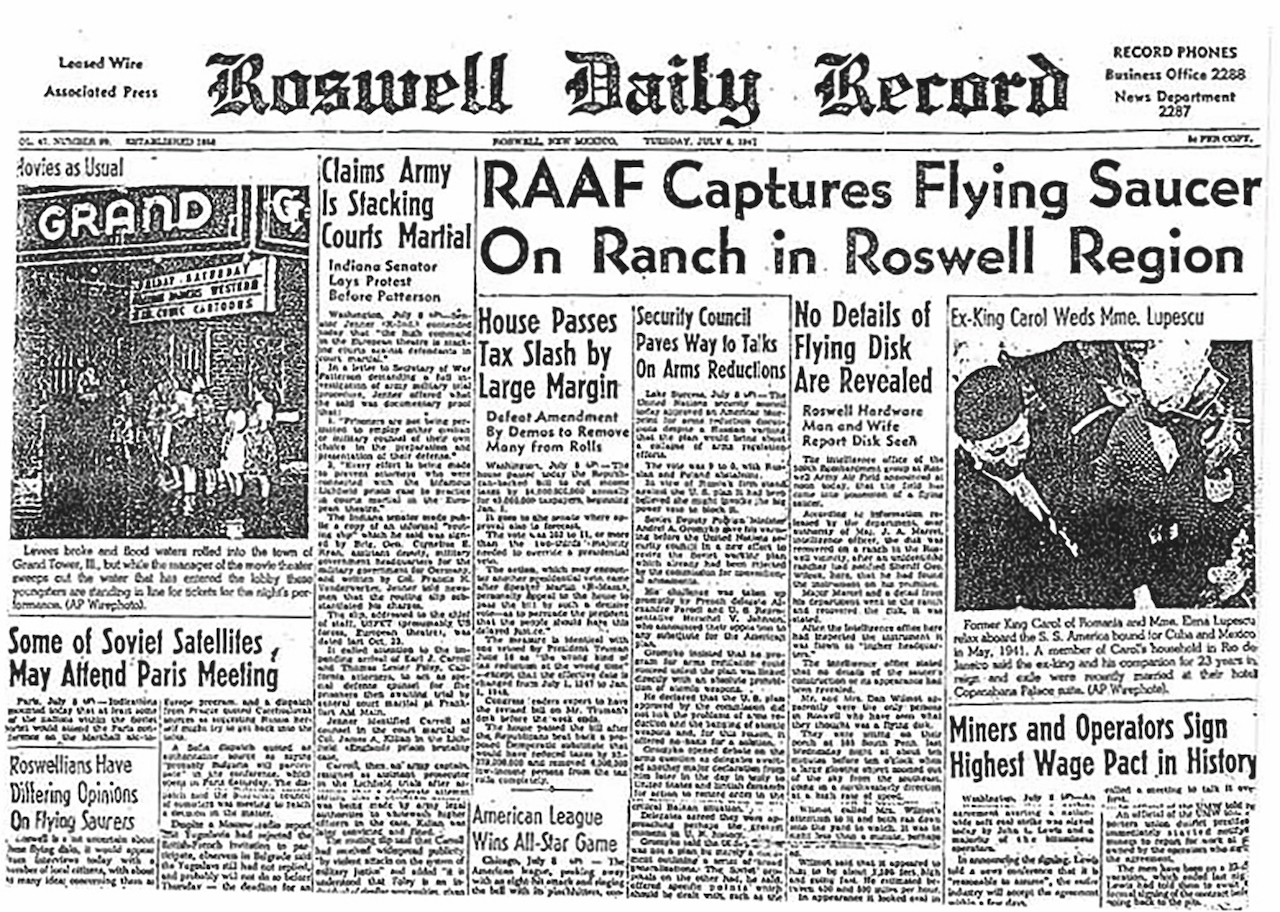
But just as quickly as excitement of the find grew, the Army took swift action in debunking the story. The very next day, shortly after government scientists began to arrive at the scene, officials claimed that the debris was actually from a crashed weather balloon, and Marcel was asked to be pictured at a press conference with the debris. And that was that, case closed — or so everyone thought.
But interest began to grow again. In 1978, nuclear physicist, author and UFO researcher Stanton Friedman interviewed Marcel, who said that the discovery made 31 years earlier was not from this world, and that the government had ordered him to keep quiet. Friedman revisited the incident and sought other witnesses, and his work inspired Charles Berlitz and William Moore to write "The Roswell Incident," published in 1980. Their conclusion was simple: There had been a huge cover-up.
The flying saucer conspiracy begins
Other things were happening in the world at the time. Notably, the sci-fi films "Star Wars" and "Close Encounters of the Third Kind" had just been released; studies have suggested that sightings and belief in UFOs rise when popular films and TV shows make their debut, The Times reported in 2009. Nevertheless, testimonies about that day in 1947 were forthcoming, and they continued to come for many years.
Glenn Dennis called a hotline shortly after an episode of "Unsolved Mysteries" featuring the Roswell incident aired in 1989. He suggested that a friend who worked as a nurse at the Roswell Army Air Field saw three alien bodies, according to TIME Magazine. But the real bombshell moment came in 1994. Could it be that the debris really was from an alien craft?
According to the U.S. Air Force, no. The weather balloon story was not true, but it wasn't to hide the fact that little green men had visited Earth. The wreckage was actually that of a classified project that flew microphones on high-altitude balloons to pick up the sound waves generated by Soviet atomic bomb tests. Called Project Mogul, it was said to have run between 1947 and 1949. What's more, the balloons were claimed to have been made up of unusual material — the type that could easily be confused for a UFO. So, case closed? Not at all.
"The ever-changing accounts gave rise to uncertainty," Kenneth Drinkwater, senior lecturer in psychology at Manchester Metropolitan University, U.K., who specializes in the anomalous and paranormal, said in an email. "The first message that went out was unclear. Then they changed the message, and it led to suspicion that something was going on and being covered up. It gives rise to a feeling that something is being hidden from the general population, leading to speculation of possible conspiracy and possibly alien technology."
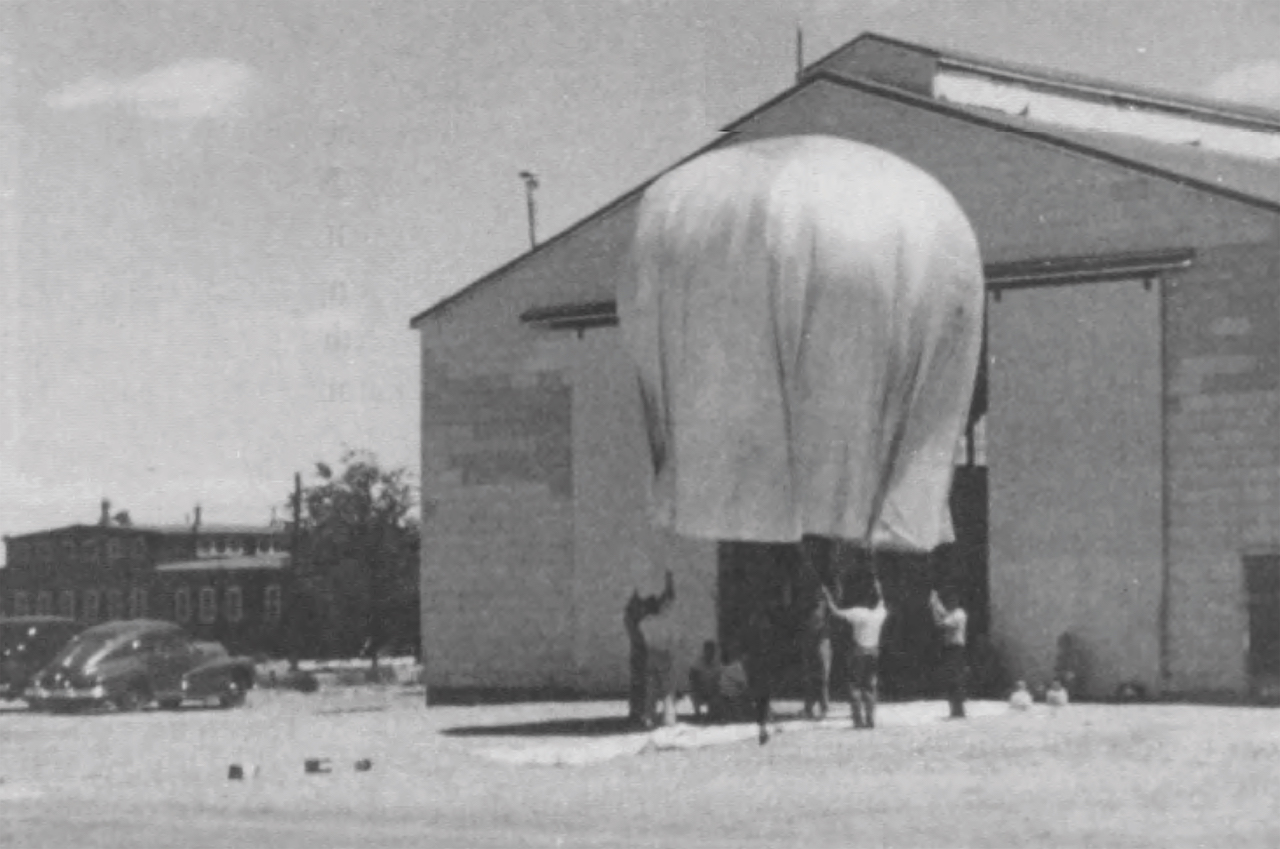
With such mixed messages, the Roswell files remain open in the eyes of many. Investigators also place great value on the testimonies of those who were there, many of them respected military personnel. "Every member of Blanchard's senior staff, with a single exception, suggested the craft was of alien origin," Kevin D. Randle, a retired lieutenant colonel of the U.S. Army Reserve who served in Vietnam and Iraq, told All About Space, a sister publication to Live Science. "Major Edwin Easley, the base provost marshal, told me, when asked if we were following the right path — meaning extraterrestrial — that it wasn't the wrong path."
The "single exception" is Cavitt, the retired lieutenant colonel of the Air Force who accompanied Marcel to the debris site. His careful testimony suggested that nothing untoward happened. He said he had never been threatened by anyone in government and that the debris wasn't extensively scattered. Yet, UFO investigators say that if the wreckage was Project Mogul, then this testimony doesn't ring true. Mogul arrays were big, so the debris field would have been large.
"Everyone agrees that something fell at Roswell, but there is no terrestrial explanation," Randle told All About Space. "Project Mogul fails because the documentation tells us that flight number four — the alleged culprit — was cancelled. It did not fly. All other explanations have failed, too: It wasn't an aircraft accident, not a rocket from White Sands and not a regular weather balloon."
Over the past 40 or so years, there have been new claims and fresh leads, adding to the mystery and keeping the Roswell files very much alive. UFO investigator Calvin Parker, for example, recently spoke of his time with Marcel before he died in 1986, claiming that Marcel revealed that he had hidden three pieces of metal from the crash site in the top of his home's water heater. They have never been recovered, however.
Many UFO investigators are keen to stress that they don't take every testimony at face value. Randle previously said that the credibility of Dennis must be discounted because of inconsistencies, and he told All About Space that the accounts of military personnel are not simply accepted just because of their background. "There are some military witnesses who have been discredited as inserting themselves into the tale," Randle wrote in an email. Likewise, there are civilian witnesses who are compelling.
"There are some very creditable civilian witnesses, such as Brazel and Frankie Rowe," said Randle. Rowe is certainly an interesting case. She was told of the crash by her father, a firefighter, who described creatures he had seen. According to Randle, Rowe said she was shown debris from the crash site, but had been told to stay quiet by the state. She says there was evidence her phone had been tapped. But of all of the witnesses, perhaps too much weight is being put on Marcel's account.
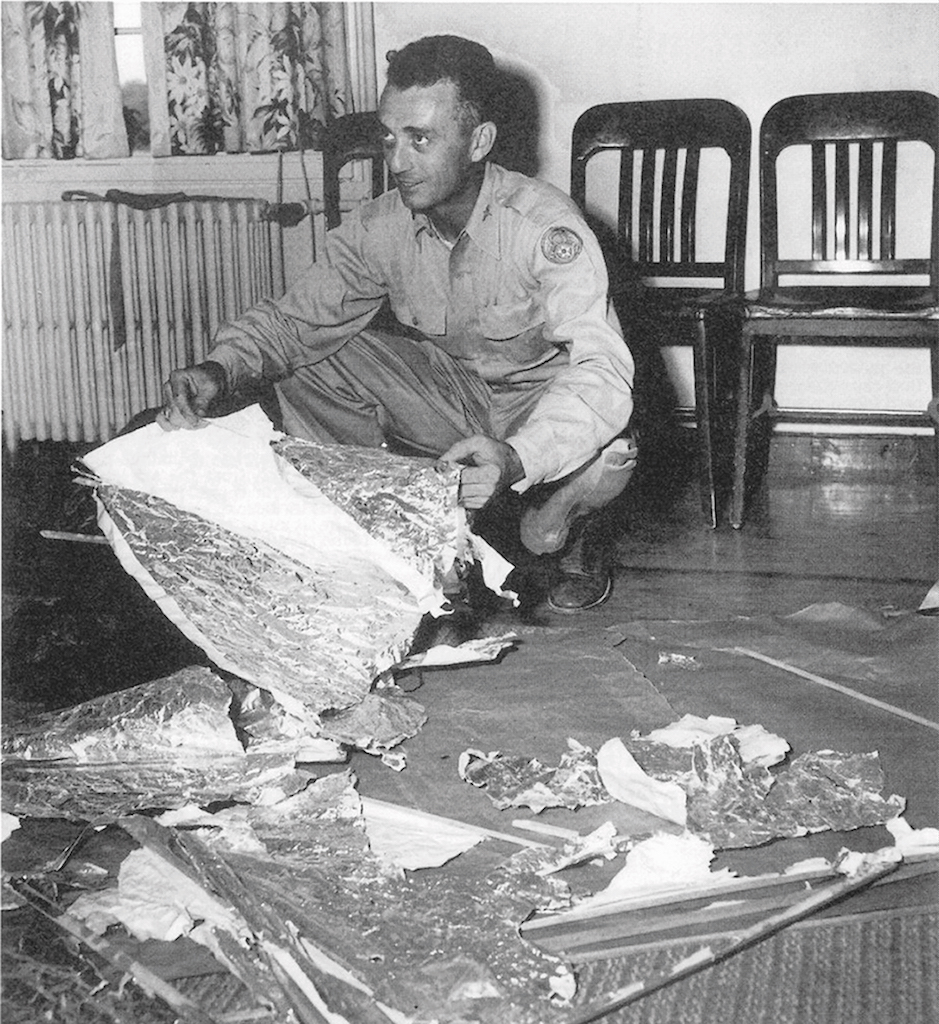
"If Marcel was standalone, then there would be some real problems here, but he is not. There are many credible witnesses — men who achieved high military rank, men and women who were prominent in their communities — who believe the craft was alien," Randle said. "We have attempted to eliminate the fakers from those who had information to provide. We have been taken in, for a time, by some of those fakers, but in the long-run it was we who investigated the case that removed many of those fakers, though based on evidence and not a belief there is no alien visitation. The point is that Marcel was backed up by other high-ranking officers and many civilians who were part of the case. Marcel told [us] what he had seen and done, and there was little embellishment in his testimony."
Randle appeared in the documentary, "Roswell: The First Witness." It follows the investigations of former CIA operative Ben Smith into Roswell, and a key part of the series is a journal found in Marcel's possessions that was initially thought to have been written by him.
Speculation continues: Was the craft of alien origin?
It turned out that the journal — which consisted of quotes, lyrics and jokes — could be dated to the time of the Roswell incident, but the handwriting didn't match Marcel's. Smith pondered why the former army officer retained the journal, and there was speculation over whether it may have contained a code. If it did, however, it could not be deciphered by even the best of minds, according to the documentary.
Smith also sought to discover what was written in a document held by Brigadier General Roger Ramey, Eighth Air Force commander, during the press conference. It was captured in a photograph taken by Star-Telegram reporter J. Bond Johnson, and ufologists have long wondered whether the words they struggle to make out refer to "victims of the wreck." As Smith found, however, even the best technology could not sufficiently clean the document enough to make the words readable, and they remain a source of debate.
Related: Flying saucers to mind control: 22 declassified military & CIA secrets
There were other interesting explorations in the documentary series. A body-language expert examined video interviews of Marcel and said it appeared that he was telling the truth, at least as he saw it. Experts including aviation crash investigator David Soucie were also taken to examine the crash site. Interestingly, the wind currents in the area were found to be inconsistent with a lightweight balloon crashing in the way that was described.
As the documentary continued, more evidence emerged. Crucially, there was a taped interview conversation between Marcel and author Linda G. Corley in which the military man discussed the items he found in 1947. "I found all this stuff and I was told to keep my mouth shut," he told Corley. "I held on to this premium for 32 years without saying anything at all. See, I was an intelligence officer. I handled intelligence and security for the base. I still hold an allegiance to my country, the vow that I took to keep my mouth shut about everything that might encroach on military secrets."
Just as compelling was an account from the family of Patrick Saunders, the 509th adjutant who is likely to have known about the whole event. He had apparently told people that it wasn't a weather balloon, but something similar to a jet fighter, that files were destroyed or changed and that the world wasn't ready for the truth because it would cause social upheaval. Were the "beings" friendly, he was said to have pondered.
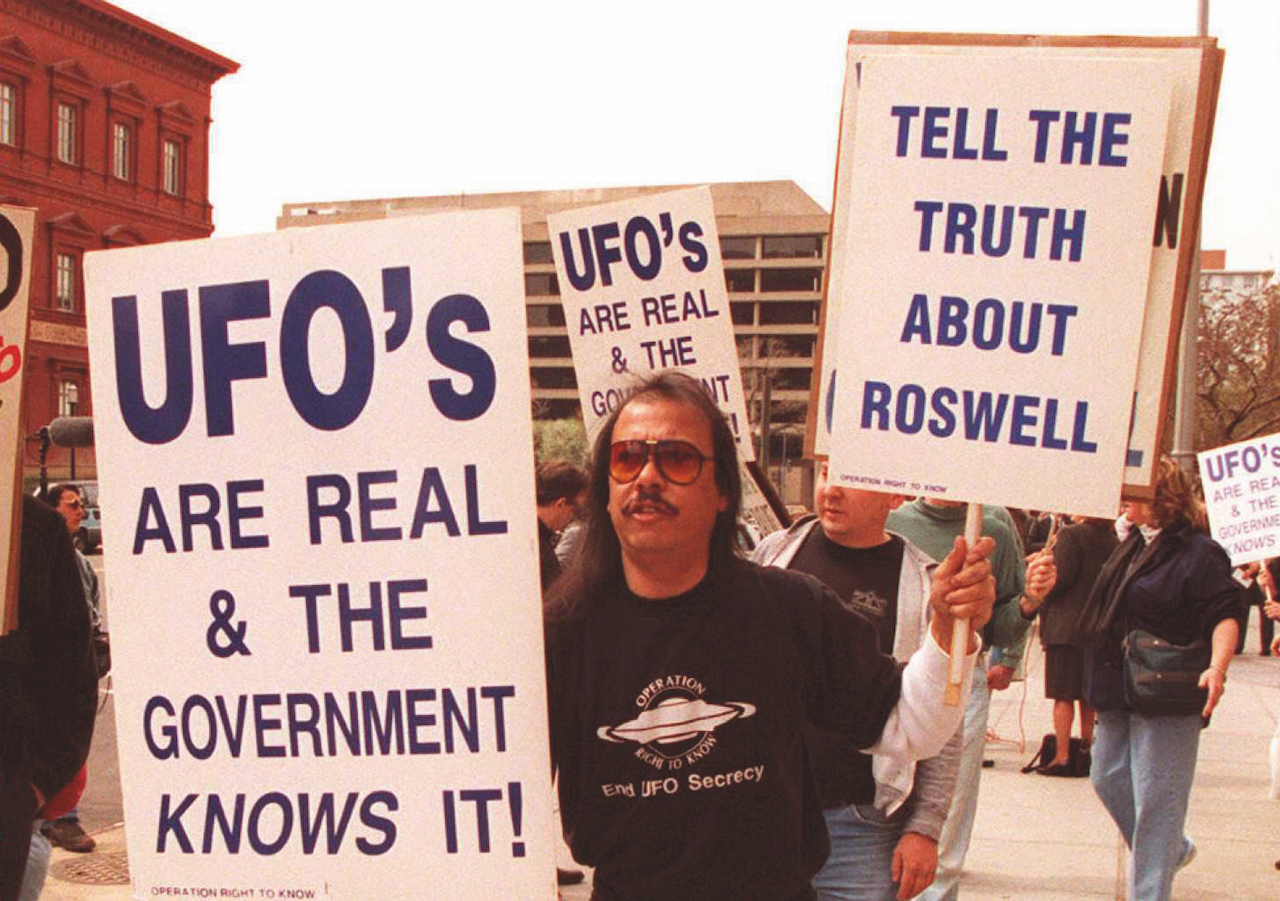
This kind of testimony — particularly the first-hand testimony of Marcel that was chronicled in Corley's book, "For the Sake of My Country" — ensures the incident remains open. The fact the U.S. government admitted there was a cover-up in 1994 only continues to add fuel to the fire.
Yet Drinkwater says failure to provide physical evidence means anecdotal accounts have spread misinformation, and he remains in doubt. "Colonel John B. Alexander offers an excellent insight into the myths and possible conspiracies connected to UFOs, the Roswell incident, the government involvement and so on," Drinkwater said. "I think it's more about a sense of reality and how it can be swayed emotionally. I'm dubious about the nature of a secret operation where many might not have known about the goings on at their level."
Roswell is a town that will be forever linked to one of the greatest mysteries of all time, and we may never truly reach a consensus on the truth that is out there.
Sign up for the Live Science daily newsletter now
Get the world’s most fascinating discoveries delivered straight to your inbox.
David Crookes is a UK-based science and technology journalist who has been writing professionally for more than two decades. Having studied at the University of Durham in England, he has written for dozens of newspapers, magazines and websites including The Independent, The i Paper, London Evening Standard, BBC Earth, How It Works and LiveScience. He has been a regular contributor to Space.com's sister publication, All About Space magazine since 2014.

